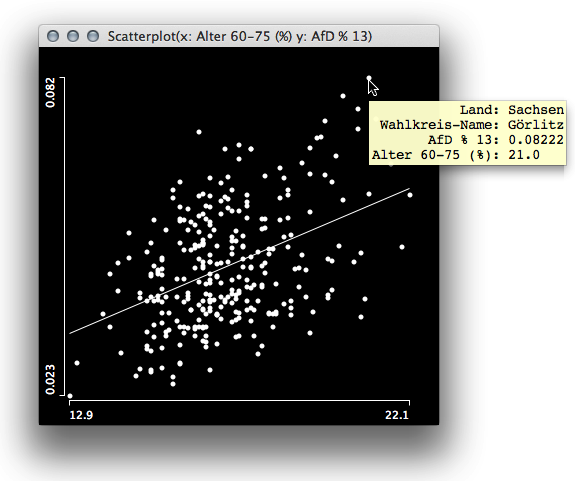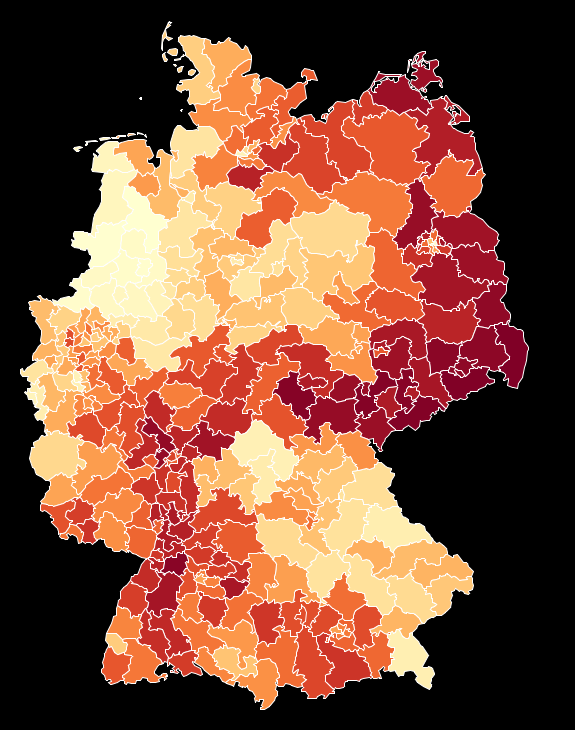German Election: 5. The Mystery of the AfD
It is nothing new, to see the rise of some populist party right before an election, exploiting some anxiety in the population. With the AfD (Alternative for Germany) it is the easy to activate fear of economical decline, potentially caused by the economical solidarity within Europe. The set-up is simple, with an ever smiling economics professor at the top as some sort of build-in authority for the promoted anti-Euro politics.
To cut a long story short, the AfD almost made it into the german parliament with 4,7%. Recent polls have them now by even 6%.Thus the question must be: “Who did actually vote for this party?”.
We may want to look at the socio economical data for the last election and hunt for high correlations with the AfD results. Surprisingly, the only variable that shows a decent positive correlation with the AfD result is the percentage of voters between age 60 to 75.
 Interestingly there are far more variables which have a negative correlation and it shows that educations helps – as often the case … With the socio demographic variables not being a good indicator, it is worthwhile to look at the geographical distribution of the election result.
Interestingly there are far more variables which have a negative correlation and it shows that educations helps – as often the case … With the socio demographic variables not being a good indicator, it is worthwhile to look at the geographical distribution of the election result.

What the map shows is quite surprising, and most people I showed this result so far did doubt that the contiguity of the areas with high AfD results could be “for real”. This upcoming conspiracy theory can be pushed even more when we look at the map, which separates areas above the overall result of 4,7% and below:

This (fragment of a) shape is too well known in german history (cf. here). But apart from all conspiracies there is a good approximation for these areas by just selecting german states.

This ensemble of plot shows that the strongholds of the AfD are more or less isolated in only 6 states, either motivated by drawing voters from only locally organized right wing groups (like in the east) or attracting voters how are too afraid of loosing their well established “German Gemütlichkeit” by helping out Greece or other troubled EURO-states (like in Baden Württemberg and Bavaria).
If you want to dig deeper, here is the data, map and the software to do so – have fun!




BRILLIANT!!!!!